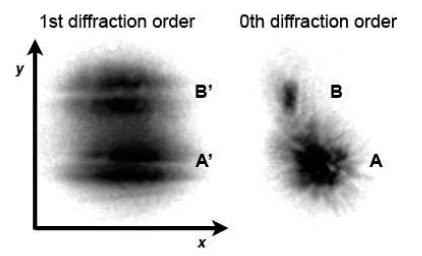Highlights - Volume 488-3 (September IV 2008)
- Details
- Published on 04 September 2008
| HIGHLIGHTS: this week in A&A |
Volume 488-3 (September IV 2008)
| In section 13. Astronomical instrumentation “Optical vortices with starlight”, by G. Anzolin, F. Tamburini, A. Bianchini, G. Umbriaco, and C. Barbieri, A&A 488, p. 1159 This paper describes two experiments with light beams carrying photon orbital angular momentum (POAM). The light beams were generated by an astronomical telescope using stars as light sources. The POAM was produced by means of a fork hologram and off-axis imaging, and measured by creating l = 1 focal plane images. These images were then compared with the predictions of theoretical optics. The experiments completed by the authors demonstrated the feasibility of POAM measurements with an astronomical telescope. They showed that instrumental effects can be predicted and seeing effects can be eliminated sufficiently to ensure that POAM measurements are possible even in poor atmospheric conditions. By presenting these results, this paper provides important information for potential, future observations of POAM in astronomical objects |
|
| In section 5. Galactic structure, stellar clusters, and populations “The red clump absolute magnitude based on revised Hipparcos parallaxes”, by M.A.T. Groenewegen, A&A 488, p. 935 Core helium-burning, low-mass stars have almost identical core masses and luminosities, and exist in relatively long-lived evolutionary stages. Their observed counterparts, the so-called red clump stars, can therefore be used as reliable distance indicators. This paper uses published, revised, Hipparcos parallaxes to recalibrate a distance-indicator method. The authors confirm the previous results in the I-band, but make a significant correction to the K-band calibration. |
| In section 8. Stellar atmospheres “The photospheric solar oxygen project. I. Abundance analysis of atomic lines and influence of atmospheric models”, by E. Caffau, H.-G. Ludwig, M. Steffen, T.R. Ayres, P. Bonifacio, R. Cayrel, B. Freytag, and B. Plez, A&A 488, p. 1031 The difficulty in measuring the oxygen abundance of the solar photosphere is well known, and this paper presents yet another lesson. Using their own 3D solar atmosphere model, they find an oxygen abundance of log(N(O)/N(H)+12)=8.76, which is half-way between the previous 3D determination and 1D measurements, although, interestingly, this difference is not attributed to 3D effects. |
© Astronomy & Astrophysics 2008


